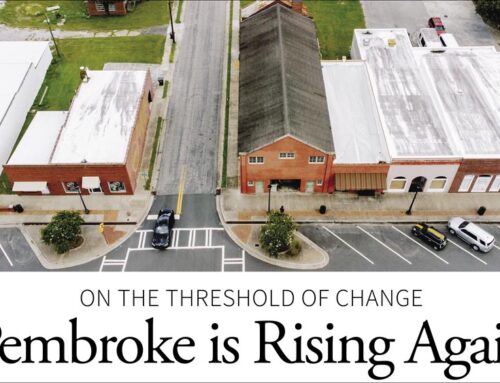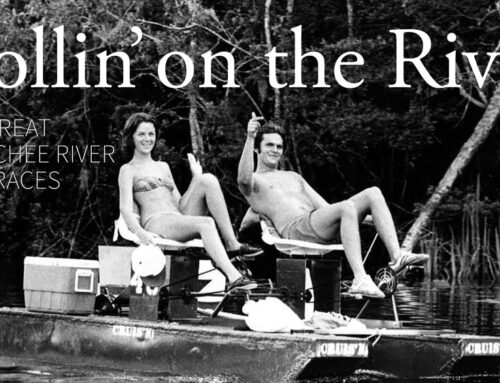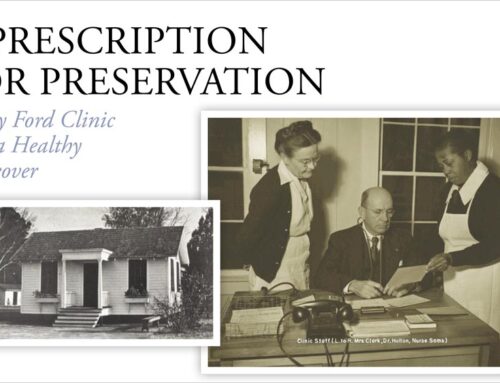
Monkey Business
WORDS BY Victor R. Pisano Featured Writer Illustration by Suzanne Simmons
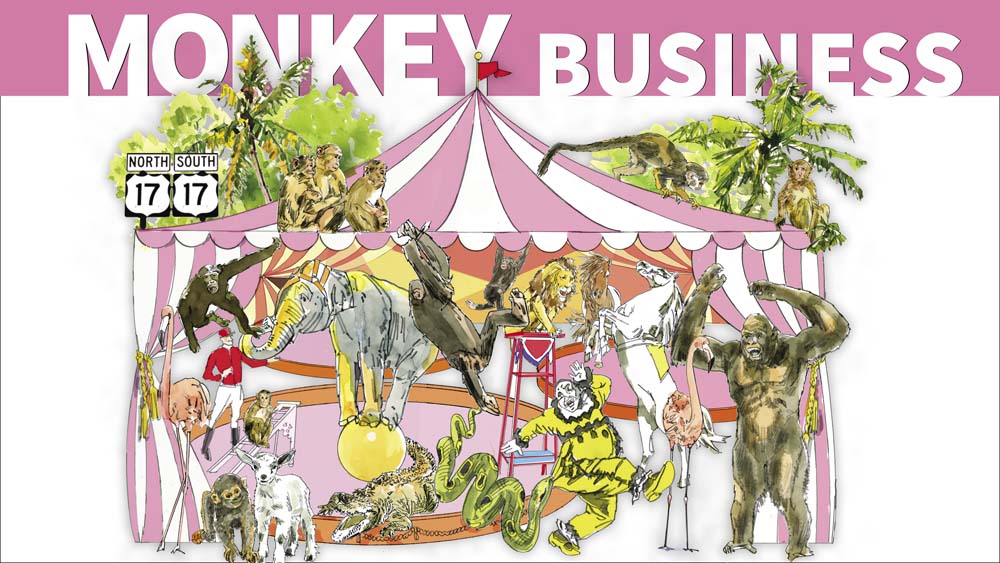
There should have been a historical marker on Rt.17 about 9 miles south of Richmond Hill proper at the split with Rt.196 heading over to Hinesville—you can look for it, but you won’t find one. If there was a historical marker it would have read: “On this site was Chico’s Monkey Farm, established Pre-World War II. A popular tourist stop and attraction visited by thousands of motorists annually driving back and forth to Florida.”
To hear local folks who remember it, Chico’s Monkey Farm was, “The biggest show on earth—and Richmond Hill.” Today, if you stand on the exact spot where the monkey farm stood, you would be standing in an overgrown hodgepodge of “swamp-itude” in the middle of a pulp pine jungle. So, what “was” this popular motor stop and where did it go?
We are all familiar with tourist traps and tourist attractions—there’s not much separating the two in most people’s minds. Chico’s Monkey Farm in Richmond Hill was a little of both. For decades, it was a huge roadside attraction but suddenly disappeared because of what created it in the first place—family travel. Let’s explain.
Not too many years ago, most everyone traveled about in family units in family vehicles on family excursions. We were no different. Growing up in New England, my dad would stack mom and all of us kids into the family car and drive around that region of the world on what he famously called, “a Sunday ride.” Those Sunday rides lasted about ten hours and it seemed like we drove across three continents before we got home later that day in the twilight hours. What were we searching for? None of us really knew, but we were well on our way.
Richmond Hill was no less blessed with its own hotspot destination, Chico’s Monkey Farm—and gift shop of course. Families would travel up and down the coastal highway on Rt.17 when I-95 was just a scattered disconnect between Maine and Florida. Rt.17 was the only continuous uninterrupted route going north and south and Chico’s Monkey Farm was right smack on the way. Everyone knew about it. It was a familiar destination for family travelers to look forward to—until their path got rerouted. Chico’s fate was sealed in 1977 when I-95 opened its local stretch of interstate to Florida.
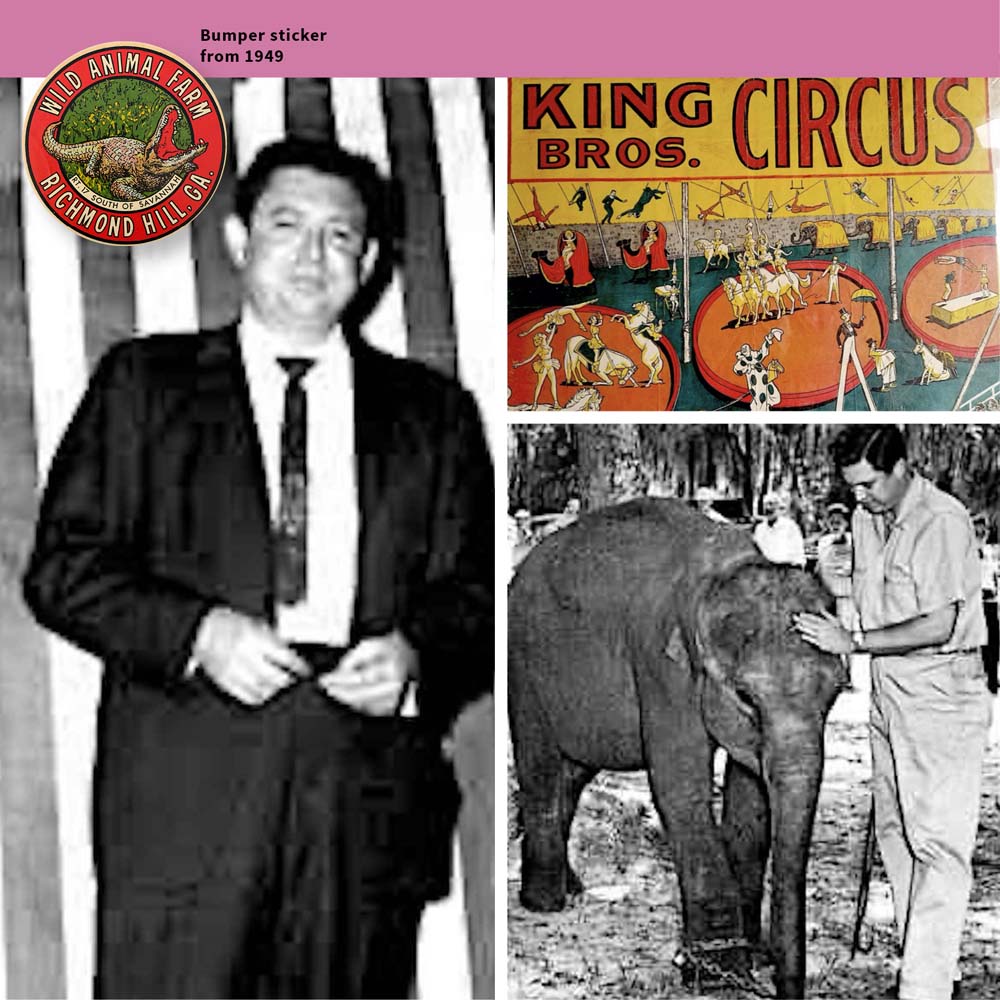
Chico’s Monkey Farm started out just before WWII as the “Wild Animal Farm.” It continued as such on up into the mid-‘50s. In those early years, the Wild Animal Farm was more noted for its gambling connections and nefarious “full service” truck stop than it was for its caged four-legged residents. Farmer Chico himself, a fictitious character, and the monkey part were most likely incorporated into the name by the last owner, Mr. Robert “Bob” Snowden. Snowden purchased the brand, building, and monkey business in 1960 and singlehandedly turned it into a valid tourist destination. Snowden was the man who made Chico’s Monkey Farm famous.
Bob Snowden was a Circus owner and promoter—a “Carny”—he could turn a ticket. He owned a touring three-ring circus based in Atlanta called, The King Bros. Circus. He also owned a zoo in Callahan, Florida, just over the Georgia line. When Snowden bought the Farm, he obviously had bigger plans for the place than just changing the name. He would pull his old circus animals off the road and bring a touring audience to them instead. Brilliant. It was as if he originated the phrase, “Build it and they will come.”
Under Snowden’s ownership, Chico’s Monkey Farm was essentially a gated community for retired circus animals. Most of the animals were old, ornery, and could care less. Snowden kept his expenses close to the vest by hiring locally, mostly young people. Mr. Roy White remembers working the farm as a teen growing up, “I loved it! I was working a 40-hour week if you add weekends and after school. I was the only kid in school with real money. I helped take care of the animals—fed them—cleaned out their cages—that sort of thing.”
Local resident Diane Phillips also reflected on working for showman Snowden in the gift shop as a teen herself. “Mr. Snowden was always traveling—in and out—moving animals he had and the like. In order to see the animals, you had to go through the gift shop of course—back through to get out. We sold pretty much everything—even food for the animals.” Circus-style tickets were sold and torn in half to get in—$1.25 at first, then jumping to $3.00 each in the ‘70s.
Bob Snowden didn’t skimp however on the number of animals he kept displayed at the monkey farm. Once you skillfully maneuvered through the gift shop, you were released out into a nine-acre compound and were greeted by a large variety of animals, many of them aimlessly wandering around. And there were more than just monkeys to be seen. In fact, Snowden famously barked out on a number of occasions, “I have more animals here than they do at the Jacksonville Zoo!” Besides a penny arcade, slot machines, and a petting zoo, on any given visit you could find; monkeys, baboons, a silver-back gorilla named “BoBo,” strutting peacocks, faded flamingos, wallabies, twelve-foot gators, bilingual parrots, exotic birds, all kinds of snakes and reptiles, old draft horses and ponies, a white-tail stag, billy goats, three leatherback sea turtles, a one-fanged lion name “Clyde,” and a visiting circus elephant or two who dropped by for conjugal visits. Add to this a seriously pink façade building with bigger-than-life animal statues and cut-outs to fill the bill. It was all, “Hurry, hurry, hurry! Step right up!!!”
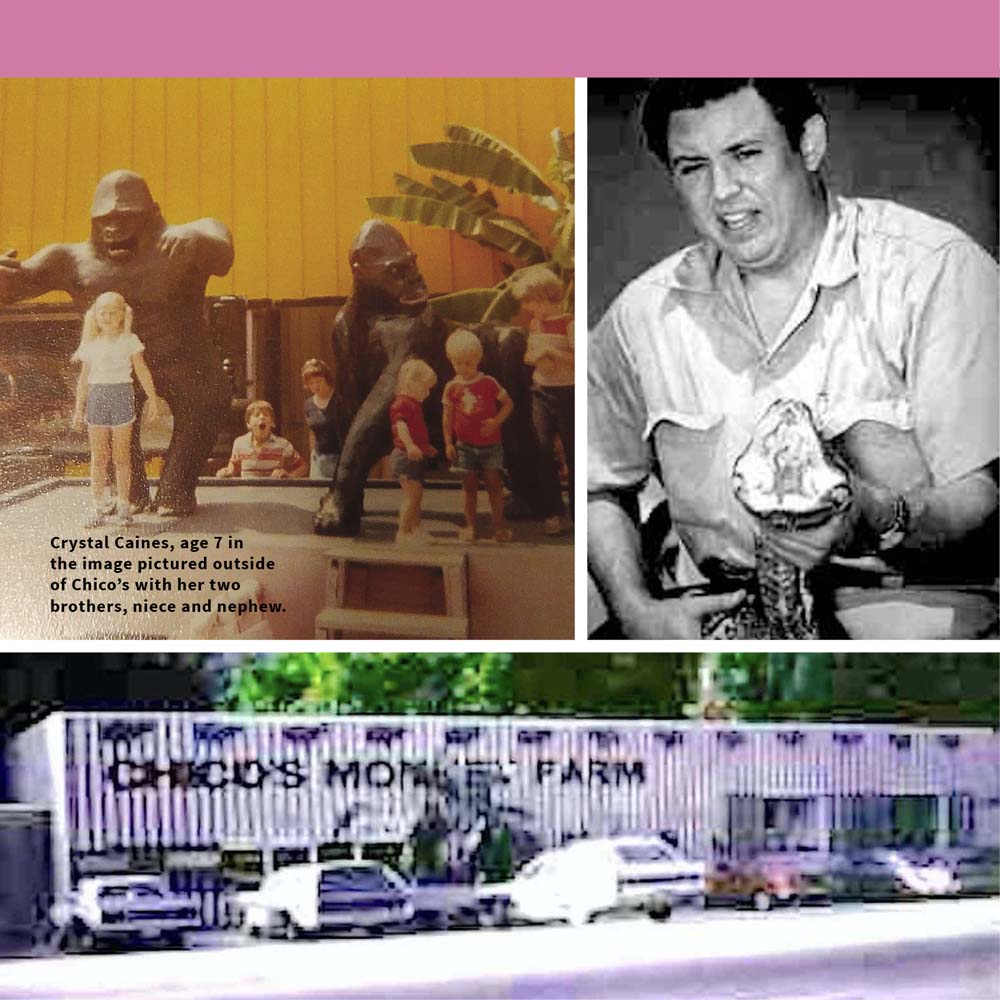
“Mr. Snowden sold animals to people too,” says Diane Phillips. “My grandmother bought a spider monkey from him one time and it tore up her kitchen pretty bad after stealing strawberries off the cake she made.”
Any wayward traveler or local animal enthusiast could buy exotic animals from the monkey farm—something frowned upon today. Squirrel monkeys were $39.95 each, spider monkeys were $129.00, and Caiman were $17.00.
Roy White recalls, “Mr. Snowden couldn’t sell alligators, it was against the law and the DNR, but he could sell Caiman—8-inch crocodiles from South America. They came a hundred to a box.”
In 1977, when I-95 opened and sucked up all the bumper-to-bumper traffic going down Rt. 17, Bob Snowden being the consummate promoter that he was, pulled his big circus tent and quietly left town. He sold most of his animal inventory to the Jacksonville Zoo, the rest found homes at his zoo in Callahan, Florida. But closing this popular tourist trap was not done without incident. Animals, most of them contentious monkeys, managed to escape out into the countryside of Richmond Hill. Baboons were reportedly sleeping at night on people’s porches while other species took to the trees. Roy White offers with a laugh, “There were monkeys living wild in Richmond Hill for many years after Mr. Snowden closed the place. Somehow they survived—for a while at least—several years after.” To this day, according to police files, no one has ever found a dead monkey in Richmond Hill. From this point on, when you travel through that neck of the woods, roll down your window and take a quick scan of the treetops.
So, yeah, maybe there should be a historical marker erected between Richmond Hill proper and Midway Center reading simply: “CHICO’S MONKEY FARM—????—1977. On this spot sat a piece of roadside America. R.I.P. Farmer Chico, whoever you were.”












